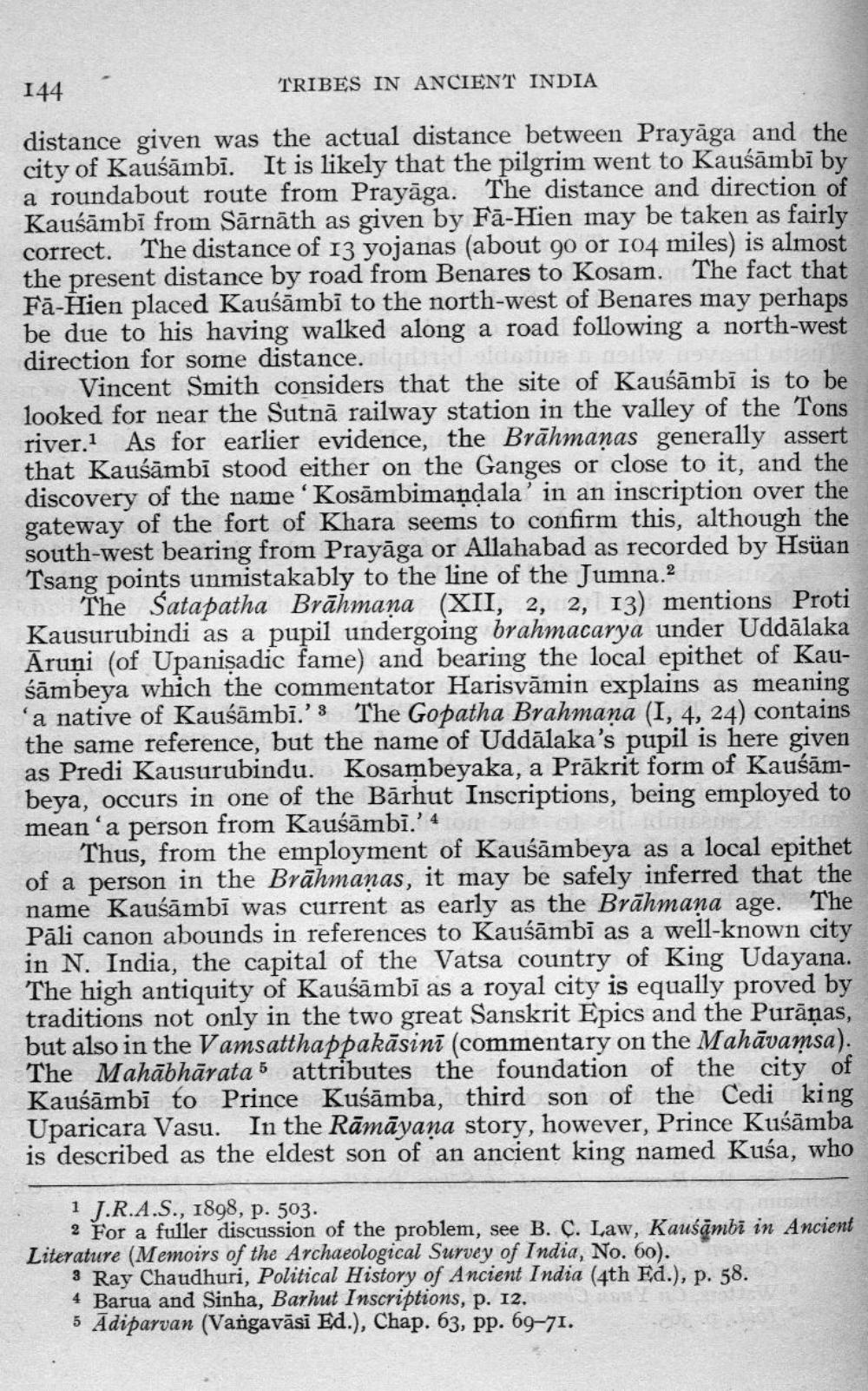________________
144
TRIBES IN ANCIENT INDIA distance given was the actual distance between Prayāga and the city of Kaušāmbi. It is likely that the pilgrim went to Kaušāmbi by a roundabout route from Prayāga. The distance and direction of Kaušāmbī from Sārnāth as given by Fā-Hien may be taken as fairly correct. The distance of 13 yojanas (about go or 104 miles) is almost the present distance by road from Benares to Kosam. The fact that Fä-Hien placed Kauśāmbī to the north-west of Benares may perhaps be due to his having walked along a road following a north-west direction for some distance.
Vincent Smith considers that the site of Kausāmbi is to be looked for near the Sutnā railway station in the valley of the Tons river. As for earlier evidence, the Brāhmanas generally assert that Kaušāmbi stood either on the Ganges or close to it, and the discovery of the name 'Kosāmbimandala' in an inscription over the gateway of the fort of Khara seems to confirm this, although the south-west bearing from Prayāga or Allahabad as recorded by Hsüan Tsang points unmistakably to the line of the Jumna.2
The Satapatha Brāhmaṇa (XII, 2, 2, 13) mentions Proti Kausurubindi as a pupil undergoing brahmacarya under Uddalaka Aruni (of Upanisadic fame) and bearing the local epithet śāmbeya which the commentator Harisvāmin explains as meaning 'a native of Kaušāmbi.'s The Gopatha Brahmana (I, 4, 24) contains the same reference, but the name of Uddālaka's pupil is here given as Predi Kausurubindu. Kosambeyaka, a Prākrit form of Kaušāmbeya, occurs in one of the Bārhut Inscriptions, being employed to mean'a person from Kaušāmbi.' 4
Thus, from the employment of Kaušāmbeya as a local epithet of a person in the Brāhmanas, it may be safely inferred that the name Kausāmbi was current as early as the Brāhmana age. The Pāli canon abounds in references to Kaušāmbī as a well-known city in N. India, the capital of the Vatsa country of King Udayana. The high antiquity of Kaušāmbi as a royal city is equally proved by traditions not only in the two great Sanskrit Epics and the Purāņas, but also in the Vamsatthappakāsinī (commentary on the Mahāvamsa). The Mahābhārata 5 attributes the foundation of the city of Kaušāmbi to Prince Kuśāmba, third son of the Cedi king Uparicara Vasu. In the Rāmāyana story, however, Prince Kuśämba is described as the eldest son of an ancient king named Kuśa, who
T911
1 J.R.A.S., 1898, p. 503
2 For a fuller discussion of the problem, see B. C. Law, Kauśīmbi in Ancient Literature (Memoirs of the Archaeological Survey of India, No. 60).
3 Ray Chaudhuri, Political History of Ancient India (4th Ed.), p. 58. 4 Barua and Sinha, Barhut Inscriptions. p. 12. 5 Adiparvan (Vangavāsi Ed.), Chap. 63, pp. 69-71.




